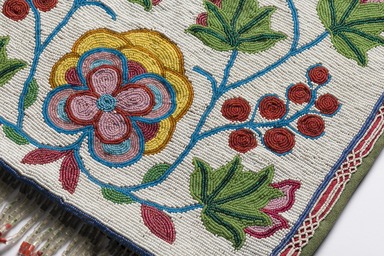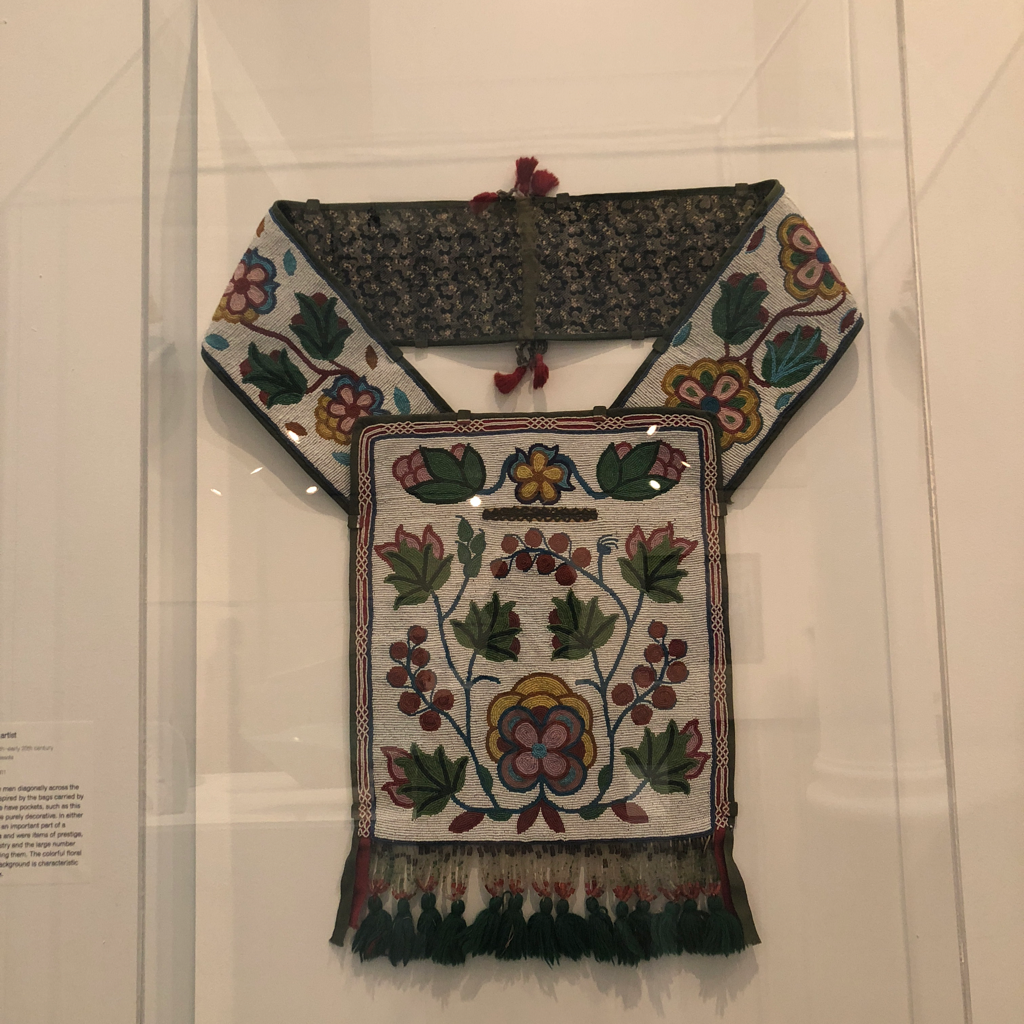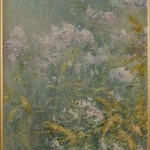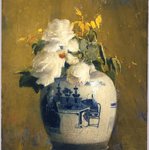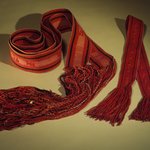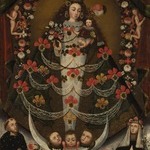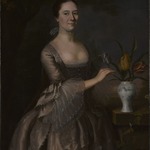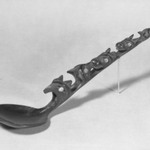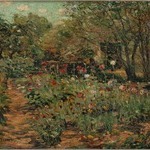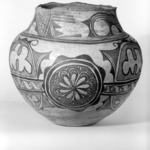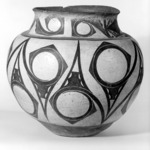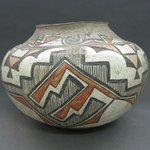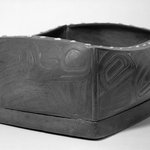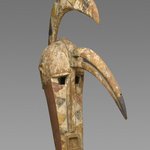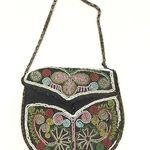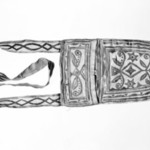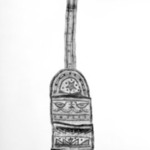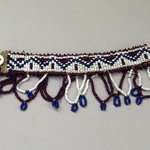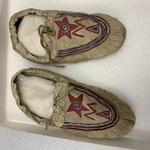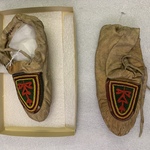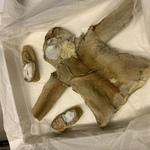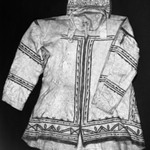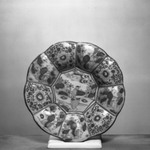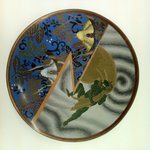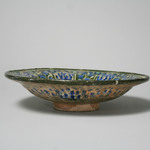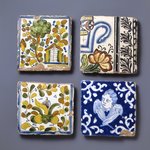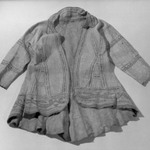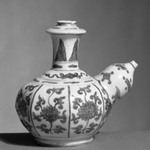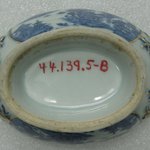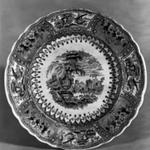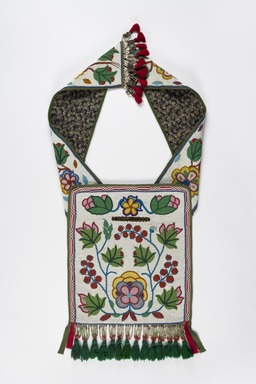

Anishinaabe (Ojibwe), Gawababiganikak. Bandolier Bag, late 19th–early 20th century. Glass beads, cloth, silk, wool, 35 × 14 1/4 in. (88.9 × 36.2 cm). Brooklyn Museum, Museum Collection Fund, 30.1471. Creative Commons-BY (Photo: Brooklyn Museum, 30.1471_front_PS22.jpg)
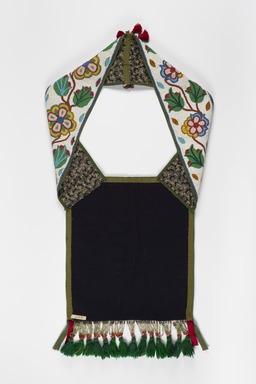
Anishinaabe (Ojibwe), Gawababiganikak. Bandolier Bag, late 19th–early 20th century. Glass beads, cloth, silk, wool, 35 × 14 1/4 in. (88.9 × 36.2 cm). Brooklyn Museum, Museum Collection Fund, 30.1471. Creative Commons-BY (Photo: Brooklyn Museum, 30.1471_back_PS22.jpg)
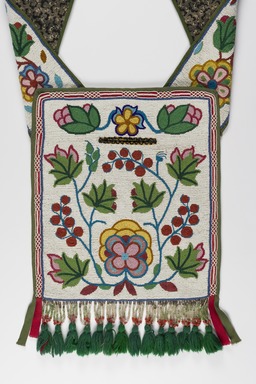
Anishinaabe (Ojibwe), Gawababiganikak. Bandolier Bag, late 19th–early 20th century. Glass beads, cloth, silk, wool, 35 × 14 1/4 in. (88.9 × 36.2 cm). Brooklyn Museum, Museum Collection Fund, 30.1471. Creative Commons-BY (Photo: Brooklyn Museum, 30.1471_detail01_PS22.jpg)
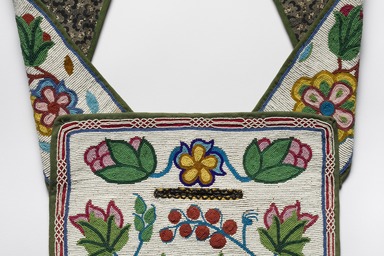
Anishinaabe (Ojibwe), Gawababiganikak. Bandolier Bag, late 19th–early 20th century. Glass beads, cloth, silk, wool, 35 × 14 1/4 in. (88.9 × 36.2 cm). Brooklyn Museum, Museum Collection Fund, 30.1471. Creative Commons-BY (Photo: Brooklyn Museum, 30.1471_detail02_PS22.jpg)
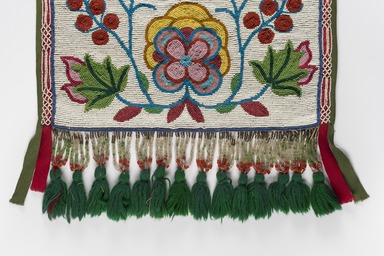
Anishinaabe (Ojibwe), Gawababiganikak. Bandolier Bag, late 19th–early 20th century. Glass beads, cloth, silk, wool, 35 × 14 1/4 in. (88.9 × 36.2 cm). Brooklyn Museum, Museum Collection Fund, 30.1471. Creative Commons-BY (Photo: Brooklyn Museum, 30.1471_detail03_PS22.jpg)
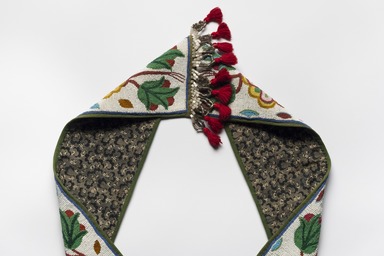
Anishinaabe (Ojibwe), Gawababiganikak. Bandolier Bag, late 19th–early 20th century. Glass beads, cloth, silk, wool, 35 × 14 1/4 in. (88.9 × 36.2 cm). Brooklyn Museum, Museum Collection Fund, 30.1471. Creative Commons-BY (Photo: Brooklyn Museum, 30.1471_detail04_PS22.jpg)
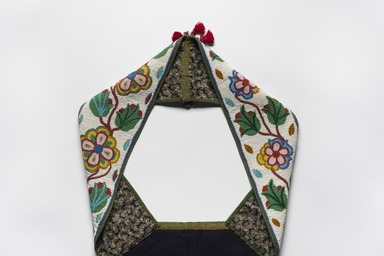
Anishinaabe (Ojibwe), Gawababiganikak. Bandolier Bag, late 19th–early 20th century. Glass beads, cloth, silk, wool, 35 × 14 1/4 in. (88.9 × 36.2 cm). Brooklyn Museum, Museum Collection Fund, 30.1471. Creative Commons-BY (Photo: Brooklyn Museum, 30.1471_detail05_PS22.jpg)
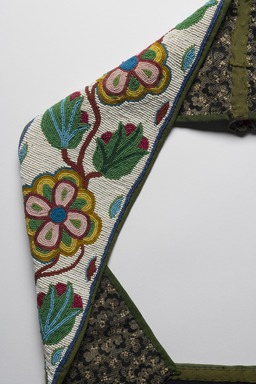
Anishinaabe (Ojibwe), Gawababiganikak. Bandolier Bag, late 19th–early 20th century. Glass beads, cloth, silk, wool, 35 × 14 1/4 in. (88.9 × 36.2 cm). Brooklyn Museum, Museum Collection Fund, 30.1471. Creative Commons-BY (Photo: Brooklyn Museum, 30.1471_detail06_PS22.jpg)
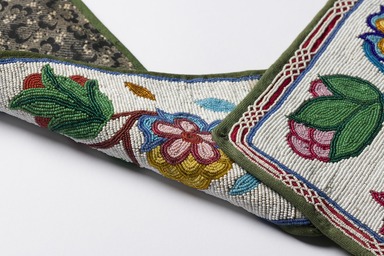
Anishinaabe (Ojibwe), Gawababiganikak. Bandolier Bag, late 19th–early 20th century. Glass beads, cloth, silk, wool, 35 × 14 1/4 in. (88.9 × 36.2 cm). Brooklyn Museum, Museum Collection Fund, 30.1471. Creative Commons-BY (Photo: Brooklyn Museum, 30.1471_detail07_PS22.jpg)
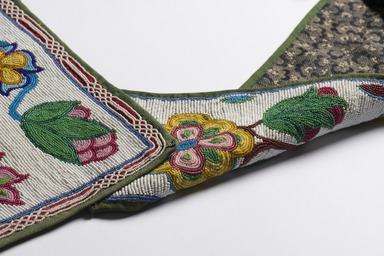
Anishinaabe (Ojibwe), Gawababiganikak. Bandolier Bag, late 19th–early 20th century. Glass beads, cloth, silk, wool, 35 × 14 1/4 in. (88.9 × 36.2 cm). Brooklyn Museum, Museum Collection Fund, 30.1471. Creative Commons-BY (Photo: Brooklyn Museum, 30.1471_detail08_PS22.jpg)
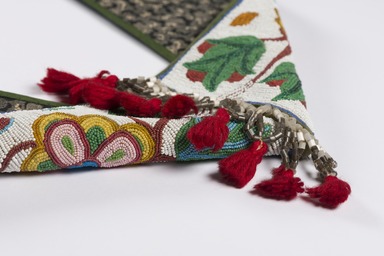
Anishinaabe (Ojibwe), Gawababiganikak. Bandolier Bag, late 19th–early 20th century. Glass beads, cloth, silk, wool, 35 × 14 1/4 in. (88.9 × 36.2 cm). Brooklyn Museum, Museum Collection Fund, 30.1471. Creative Commons-BY (Photo: Brooklyn Museum, 30.1471_detail09_PS22.jpg)
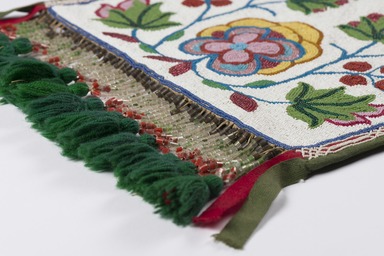
Anishinaabe (Ojibwe), Gawababiganikak. Bandolier Bag, late 19th–early 20th century. Glass beads, cloth, silk, wool, 35 × 14 1/4 in. (88.9 × 36.2 cm). Brooklyn Museum, Museum Collection Fund, 30.1471. Creative Commons-BY (Photo: Brooklyn Museum, 30.1471_detail10_PS22.jpg)
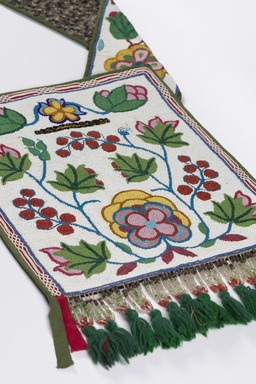
Anishinaabe (Ojibwe), Gawababiganikak. Bandolier Bag, late 19th–early 20th century. Glass beads, cloth, silk, wool, 35 × 14 1/4 in. (88.9 × 36.2 cm). Brooklyn Museum, Museum Collection Fund, 30.1471. Creative Commons-BY (Photo: Brooklyn Museum, 30.1471_detail11_PS22.jpg)
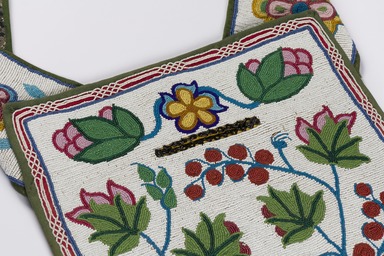
Anishinaabe (Ojibwe), Gawababiganikak. Bandolier Bag, late 19th–early 20th century. Glass beads, cloth, silk, wool, 35 × 14 1/4 in. (88.9 × 36.2 cm). Brooklyn Museum, Museum Collection Fund, 30.1471. Creative Commons-BY (Photo: Brooklyn Museum, 30.1471_detail12_PS22.jpg)
Bandolier Bag
Arts of the Americas
On View: American Art Galleries, 5th Floor, To Give Flowers


